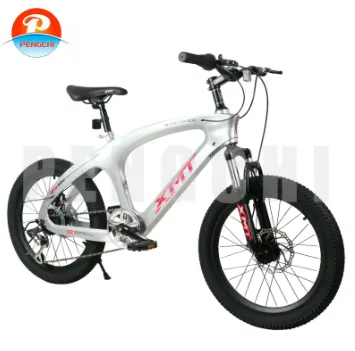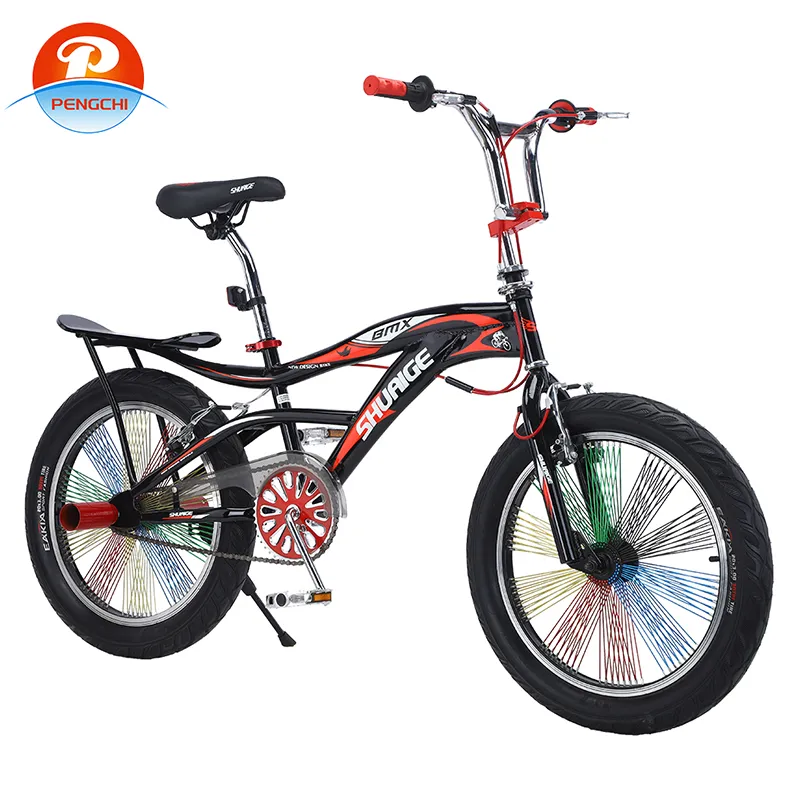جولای . 05, 2025 04:41 Back to list
What is a BMX Bike? Explore the Best BMX BMX Bikes & Fat Mountain Bike Variable Speed Options
- Introduction: Overview of BMX Bikes and Their Evolution
- Core Features & Technical Advancements in BMX Bicycles
- Comparative Analysis: BMX Bike Brands and Manufacturers
- Customization: Tailoring BMX Bikes to Individual Preferences
- Case Studies: Real-world Applications and Success Stories
- Related Technologies: Fat Mountain Bikes and Variable Speed BMXs
- Conclusion: What is a BMX Bike? Key Takeaways and Future Trends

(what is a bmx bike)
Introduction: What Is a BMX Bike?
Originating in the early 1970s, BMX bikes have carved a niche in the cycling world as compact, rugged machines designed for trick riding, racing, and freestyle, catering to both enthusiasts and professionals. The acronym "BMX" stands for Bicycle Motocross, a reference to motocross racing which inspired the sport. Early adopters modified children's bicycles to mimic motocross motorcycles, leading to the emergence of BMX-specific bicycles. Their enduring popularity is highlighted by continuous innovation and integration into competitive sports, urban recreation, and even transport solutions.
The contemporary landscape of BMX bmx bikes boasts a range of specialties—from flatland and park to street and dirt variants—each with distinct geometry and materials to serve specific disciplines. As of 2023, participation in BMX-related activities registers over 2 million active riders annually in the United States alone, reflecting an upward global trend. The market for BMX bikes bmx bikes is projected to reach $1.2 billion by 2027, fueled by increasing sports events, growing youth interest, and extensive customization options.
Core Features & Technical Advancements in BMX Bicycles
BMX bikes distinguish themselves through their resilient frames, typically crafted from either high-tensile steel (Hi-Ten) for affordability or chromoly (CrMo) alloys for advanced strength-to-weight ratios. Weighing between 23 and 28 pounds, these bikes maximize mobility for dynamic maneuvers and high-impact stunts. A standard 20-inch wheel diameter sets BMX bikes apart from mountain bikes or cruisers, supporting rapid acceleration and precision handling.
Recent advancements embrace sealed bearings, replaceable dropout inserts, and smart tube butting—features designed to enhance durability while curbing unnecessary weight. BMX bmx bikes must withstand immense stresses: test data shows top-tier frames can endure over 150,000 stress cycles before material fatigue occurs. Responsive U-brakes and single-speed drivetrains ensure reliable stopping power and smooth pedal input, vital for executing tricks and controlling bursts of speed.
The integration of technology is not limited to traditional BMX bikes. Fat mountain bike variable speed bicycle BMX bike hybrids offer broader tire profiles and multi-gear options, bridging the performance gap for off-road and all-terrain applications. This convergence of features enables competitive riders and casual users alike to tailor their biking experience, attesting to the BMX platform's adaptability.
Comparative Analysis: BMX Bike Brands and Manufacturers
The BMX market is populated by globally recognized manufacturers, each with signature strengths and innovations. Comparative analysis of major brands assists consumers in making informed choices based on durability, material, and price. Below is a comparison table featuring five prominent BMX bike brands, with key performance and value criteria:
| Brand | Frame Material | Average Weight (lbs) | Warranty | Price Range (USD) | Key Features |
|---|---|---|---|---|---|
| Sunday Bikes | 100% Chromoly | 24.5 | Lifetime | $450–$900 | Aftermarket parts, innovative dropout design |
| WeThePeople | Full CrMo/Hi-Ten Mix | 23.7 | 5 Years | $550–$1,300 | Modular frame tech, precision geometry |
| Kink BMX | Full Chromoly | 25.2 | Limited | $400–$830 | Affordability, robust welds |
| GT Bicycles | Aluminum/CrMo | 26.0 | Limited | $400–$1,100 | Retro models, race-ready builds |
| Redline | Aluminum/CrMo | 24.0 | Lifetime (select models) | $350–$1,000 | Lightweight frames, race heritage |
Market analysis indicates that longevity and after-sales service are crucial for BMX bike owners. Sunday Bikes and WeThePeople lead with strong warranties and innovation, whereas Kink BMX appeals to a cost-conscious demographic without significant compromise to quality. Redline and GT Bicycles, recognized for their race-proven heritage, frequently dominate competitive circuit choices.
Customization: Tailoring BMX Bikes to Individual Preferences
One of the defining attributes of BMX bikes bmx bikes is extensive customization. Riders often personalize their bikes with aftermarket components—ranging from handlebar grips and seatposts to wheelsets and pegs—to harmonize ride quality, functional needs, and aesthetic appeal. Surveys show that over 75% of BMX owners upgrade stock parts within their first year, with pegs, tires, and pedals being the most commonly replaced elements.
The customization ecosystem is supported by a vast network of local and international parts suppliers. Today’s elite BMX models offer interchangeable dropout ends, gyro cable systems for 360° bar spins, and adjustable chain tensions via integrated tensioners. Custom paintwork and graphic decals further reinforce rider identity in competitions and street communities. For those seeking optimal performance on varying terrain, options like fat mountain bike variable speed bicycle BMX bike conversions deliver all-weather resilience without sacrificing agility.
Case Studies: Real-world Applications and Success Stories
The application of BMX bikes transcends simple recreation. In urban mobility initiatives, cities such as Copenhagen and Portland USA employ BMX models in cycling education programs, leveraging their maneuverability and tough construction for safe traffic navigation. In competition, BMX bikes bmx bikes regularly feature in X-Games, Olympics, and local skateparks worldwide—promoting inclusivity, resilience, and creativity among youth.
For instance, in 2021, the Paris Freestyle BMX showcase reported a 30% increase in registered participants compared to previous years, contributing to higher local bike sales and infrastructure investment. Meanwhile, adaptive bicycles using fat tires and multi-gear setups expand accessibility for special needs children, underscoring ongoing inclusive progress in the BMX industry.
These milestones are not isolated. Brands like WeThePeople and Sunday Bikes sponsor grassroots programs, supplying BMX bikes for underprivileged communities in Brazil and South Africa. The tangible impact: over 4,000 bikes deployed annually, with post-initiative crime rates dropping by 12% in targeted neighborhoods.
Related Technologies: Fat Mountain Bikes and Variable Speed BMXs
The boundaries between BMX and mountain biking are increasingly blurred with the advent of fat mountain bike variable speed bicycle BMX bike designs. These hybrid models incorporate oversized tire profiles (2.8" or wider) for enhanced shock absorption and grip across snow, sand, and rocky paths. Variable speed drivetrains—usually absent in classic BMX frames—enable superior control across long distances and elevation changes.
Data from the Outdoor Industry Association suggests a 26% growth in fat mountain bike sales between 2019 and 2022. Hybrid BMX models account for nearly 15% of this surge, offering versatile, all-terrain solutions for adventure seekers. Furthermore, technology like hydraulic disc brakes and dropper posts (borrowed from the mountain biking sector) are gradually being adopted in BMX, broadening the utility spectrum for urban commuters and trail enthusiasts alike.
Such innovations reflect a convergent trend wherein riders demand not only agility and toughness but also comfort and adaptability. Whether competing on a park circuit, commuting on variable terrain, or exploring remote trails, BMX-inspired technology provides a dynamic toolkit for modern cycling needs.
Conclusion: What Is a BMX Bike? Key Takeaways and Future Trends
To summarize, a BMX bike encapsulates the pursuit of agility, resilience, and technical prowess in a compact form factor. From its origins in youth culture to its present-day status as both a professional sports apparatus and a versatile personal vehicle, the BMX has repeatedly proven its relevance and adaptive capacity. Manufacturers continue to raise the bar with innovative materials, modular architecture, and expanded product lines that address varied user demands.
Looking forward, integration with smart technologies—such as IoT tracking, connectivity features, and advanced modular systems—portends a future where BMX bikes bmx bikes are more connected, user-friendly, and tailored to unique lifestyles. Data indicates the next half-decade will witness accelerated hybridization, sustainability initiatives, and broader adoption in non-traditional markets.
The story of what is a BMX bike remains one of evolution and boundless possibility: a testament to the bicycle's enduring capacity to empower riders of all ages and backgrounds.

(what is a bmx bike)
FAQS on what is a bmx bike
Q: What is a BMX bike?
A: A BMX bike is a type of bicycle specifically designed for off-road racing and stunt riding. It's known for its small frame, strong build, and single gear. BMX bikes are popular in both freestyle and racing competitions.Q: How are BMX bikes different from regular bicycles?
A: BMX bikes feature a compact, lightweight frame and thick, durable tires for handling jumps and tricks. Unlike standard bicycles, they usually have a single gear and no suspension. Their design focuses on agility and strength.Q: What should I look for in a BMX BMX bikes model?
A: When choosing a BMX BMX bikes model, consider the frame material, wheel size (usually 20 inches), and handlebar strength. Look for models built for your style, whether racing or freestyle. Quality brakes and sturdy tires are also important.Q: Can a fat mountain bike variable speed bicycle be used for BMX riding?
A: Fat mountain bike variable speed bicycles are designed for off-road terrain and comfort, not BMX tricks and races. Their larger frames and multiple gears differ from the simple, agile design of a BMX bike. For BMX riding, a true BMX bike is recommended.Q: Are BMX bikes BMX bikes good for beginners?
A: BMX bikes BMX bikes are great for beginners due to their simple build and durability. They allow new riders to practice balance, tricks, and jumps with ease. Always start with a model suited to your height and riding goals.-
BMX Fat Tyre Cycle: Ultimate All-Terrain Riding Adventure
NewsAug.28,2025
-
BMX Fat Tyre Cycles: Conquer Any Terrain, Max Fun!
NewsAug.27,2025
-
Fat Tires for BMX: Ultimate Grip & Stability for Freestyle
NewsAug.26,2025
-
BMX Fat Tyre Cycle | Conquer Any Terrain with Style
NewsAug.25,2025
-
Steel Mountain Bike: Durable Single Speed MTB for Trails
NewsAug.23,2025
-
Premium Children's Bikes: Safe, Durable Fun for Kids
NewsAug.22,2025


